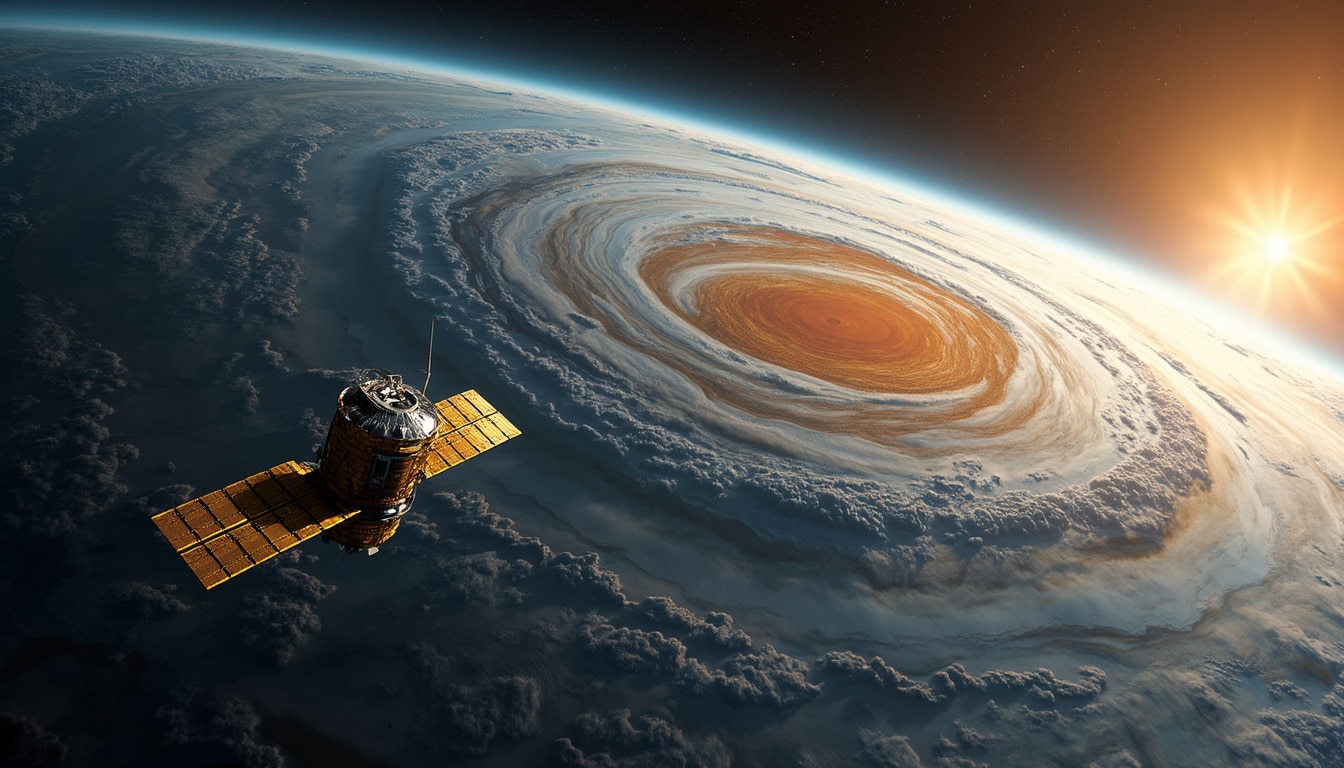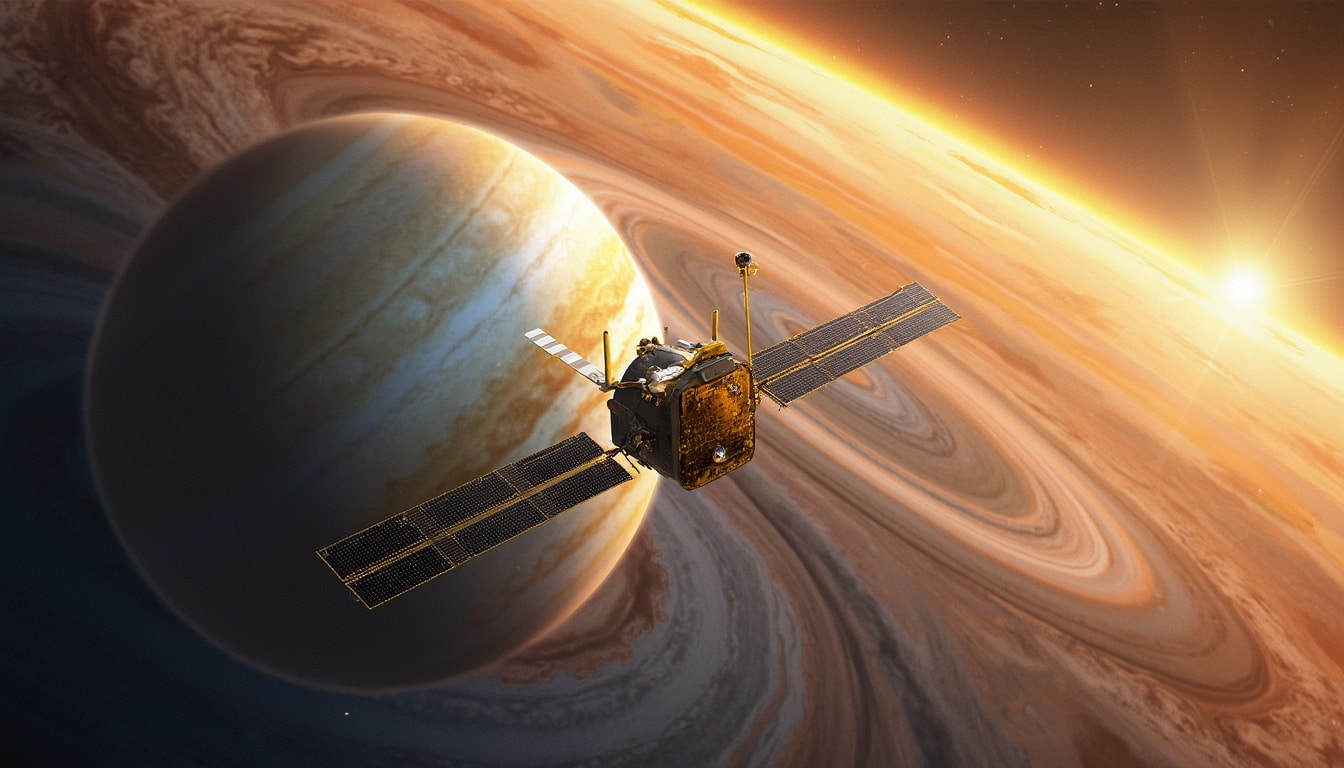The incredible journey of NASA’s Juno spacecraft continues to captivate space enthusiasts and scientists alike. Recently, Juno experienced an unexpected but manageable setback while orbiting Jupiter. This episode, where the spacecraft entered a “safe mode,” highlighted the challenges of deep-space exploration, yet it also underscored the resilience and innovation of NASA and their spacecraft engineering solutions. This article delves into the details surrounding Juno’s mission, the current situation with its safe mode activation, and what it means for the future of planetary science and astrophysics.
Overview of NASA’s Juno Mission
Launched in August 2011, Juno’s primary mission is to explore Jupiter, the largest planet in our solar system. This spacecraft aims to gather crucial data about the planet’s atmosphere, magnetic field, and potential structure beneath its cloud cover. One of Juno’s most ambitious goals is to discern the origins and evolution of Jupiter, which, in turn, may provide insights into the formation of our solar system. As Juno performs its close passes of the gas giant, it collects valuable information not just for planetary science but also for the broader field of space exploration.

Scientific Objectives of the Juno Mission
The Juno mission encompasses a number of scientific objectives essential for understanding Jupiter better. These include:
- Mapping Jupiter’s magnetic and gravity fields to understand its internal structure.
- Investigating the composition of Jupiter’s atmosphere, including the distribution of water and ammonia.
- Studying the planet’s polar regions and their unique auroras.
- Examining how the gas giant’s atmosphere circulates and generates storms, including the Great Red Spot.
Through these objectives, Juno contributes significantly to the fields of aerospace technology and engineering solutions. Each close encounter with Jupiter provides researchers with a treasure trove of data that can reshape our understanding of giant planets.
Understanding the Safe Mode Incident
On April 4, 2025, Juno experienced an anomaly that resulted in the spacecraft entering a safe mode. According to NASA, this occurred about an hour before its 71st close pass of Jupiter, known as perijove. While the activation of safe mode might sound alarming, it is a standard safety protocol for spacecraft when they encounter unexpected malfunctions or anomalies. During this period, critical instruments are shut down and operations are paused until engineers assess the situation and resolve any issues.
Why Does Juno Go into Safe Mode?
Juno, like many spacecraft, is designed to react to unforeseen anomalies autonomously. This protects its sensitive instruments and systems from further damage. The safe mode was triggered due to complications likely linked to navigating Jupiter’s intense radiation belts, which are known to create hostile conditions for spacecraft electronics. These radiation belts are far more intense than anything encountered in Earth’s Van Allen belts, presenting unique challenges that require innovative protective measures.
The good news is that Juno has a robust design that includes a titanium radiation vault to shield its components from the bombardment of charged particles. This protective measure is a testament to cutting-edge aerospace technology and engineering solutions employed by NASA. Understanding how Juno reacts under distressing conditions enhances our knowledge of protecting space instruments from harsh extraterrestrial environments.
Recovery and Future Plans for Juno
Just days after entering safe mode, Juno’s mission control transmitted a successful recovery message, indicating that the spacecraft had returned to its normal operations. Engineers continue to analyze the technical data that led to the safe mode activation, seeking to understand the underlying issues and ensure such incidents can be mitigated in future operations. Flying close to a gas giant is no easy task, but the recovery reaffirms the robustness of both the design and the team managing Juno’s operations.
What Lies Ahead for Juno’s Mission?
The next scheduled close approach to Jupiter is set for May 7, giving scientists and engineers a chance to test Juno as it navigates through the high radiation belts once again. A wealth of data is expected from this flyby, as it continues to capture images and measurements crucial for ongoing research in planetary science.
Planned future activities for Juno include potential modifications to its operational strategies based on the learning from recent experience. This requires adaptability and the ingenuity that NASA is known for. As Juno continues its mission, researchers are excitedly awaiting new insights into Jupiter’s atmosphere, magnetic field, and overall structure.
Impact on Space Exploration and Scientific Community
The Juno mission and its recent challenges underscore the complexities of space exploration. Each incident, including the safe mode episodes, offers learning opportunities that advance our understanding of deep-space missions. The scientific community is increasingly recognizing the significance of Juno’s discoveries, especially in relation to atmospheric phenomena and planetary formation theories.
| Key Achievements of Juno | Impact on Science |
|---|---|
| First detailed observations of Jupiter’s polar regions | Revolutionizes understanding of atmospheric dynamics on gas giants |
| Mapping of Jupiter’s magnetic field | Enhances models of planetary magnetism and evolution |
| Insights into the Great Red Spot | Provides data on storm longevity and stability mechanisms |
The rich tapestry of Juno’s findings is not just confined to its intended objectives. The information extracted from its journey can also inform missions aimed at exploring exoplanets and other celestial bodies in the future. As Juno pushes the boundaries of our understanding, it serves as an empirical foundation for addressing fundamental questions about the universe.
Space enthusiasts and the scientific community remain engaged and passionate about the results produced by Juno’s ongoing investigations. With each data drop, Juno provides a glimpse into the mysteries of Jupiter, fueling curiosity and expanding our understanding of the cosmos.





Leave a Reply